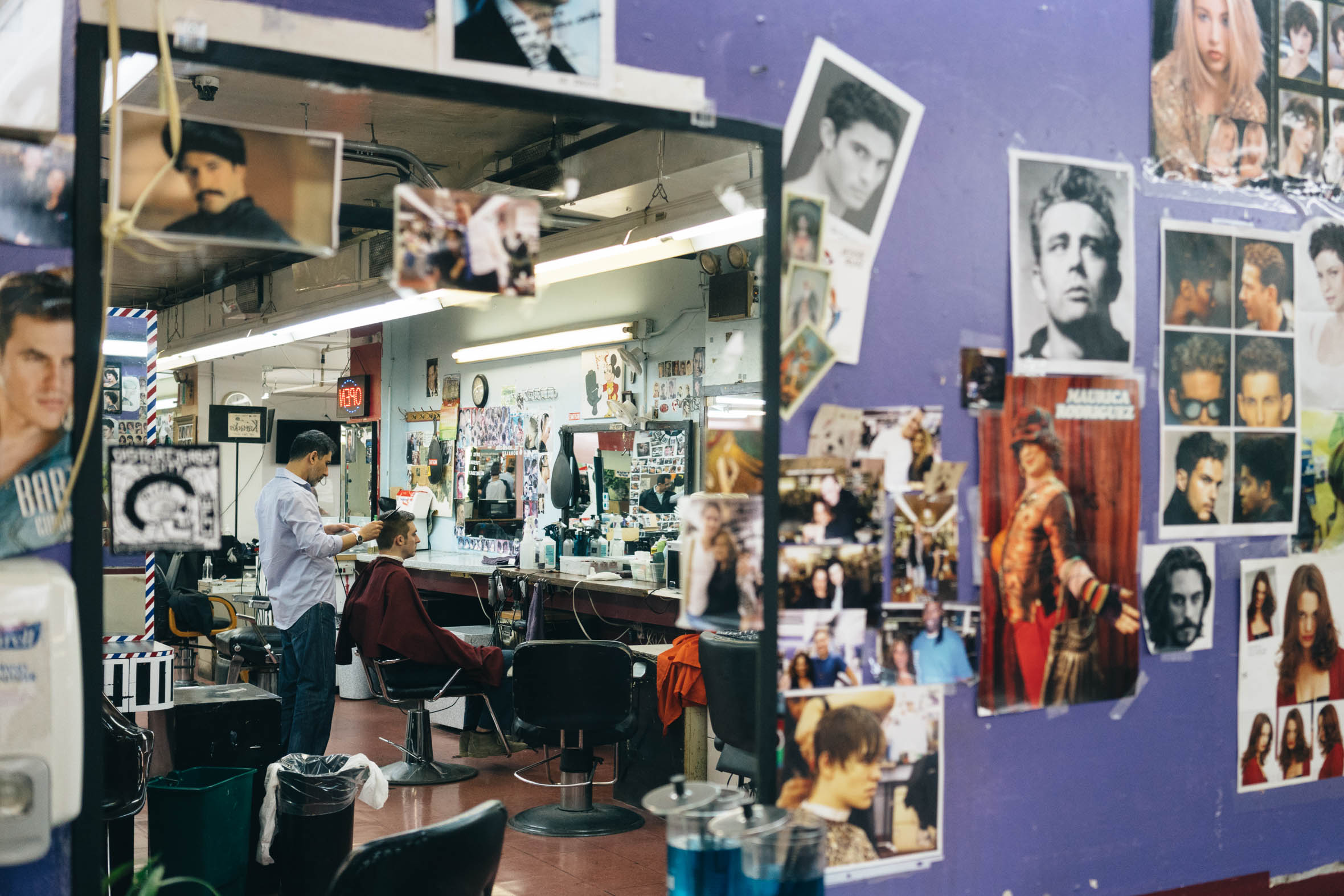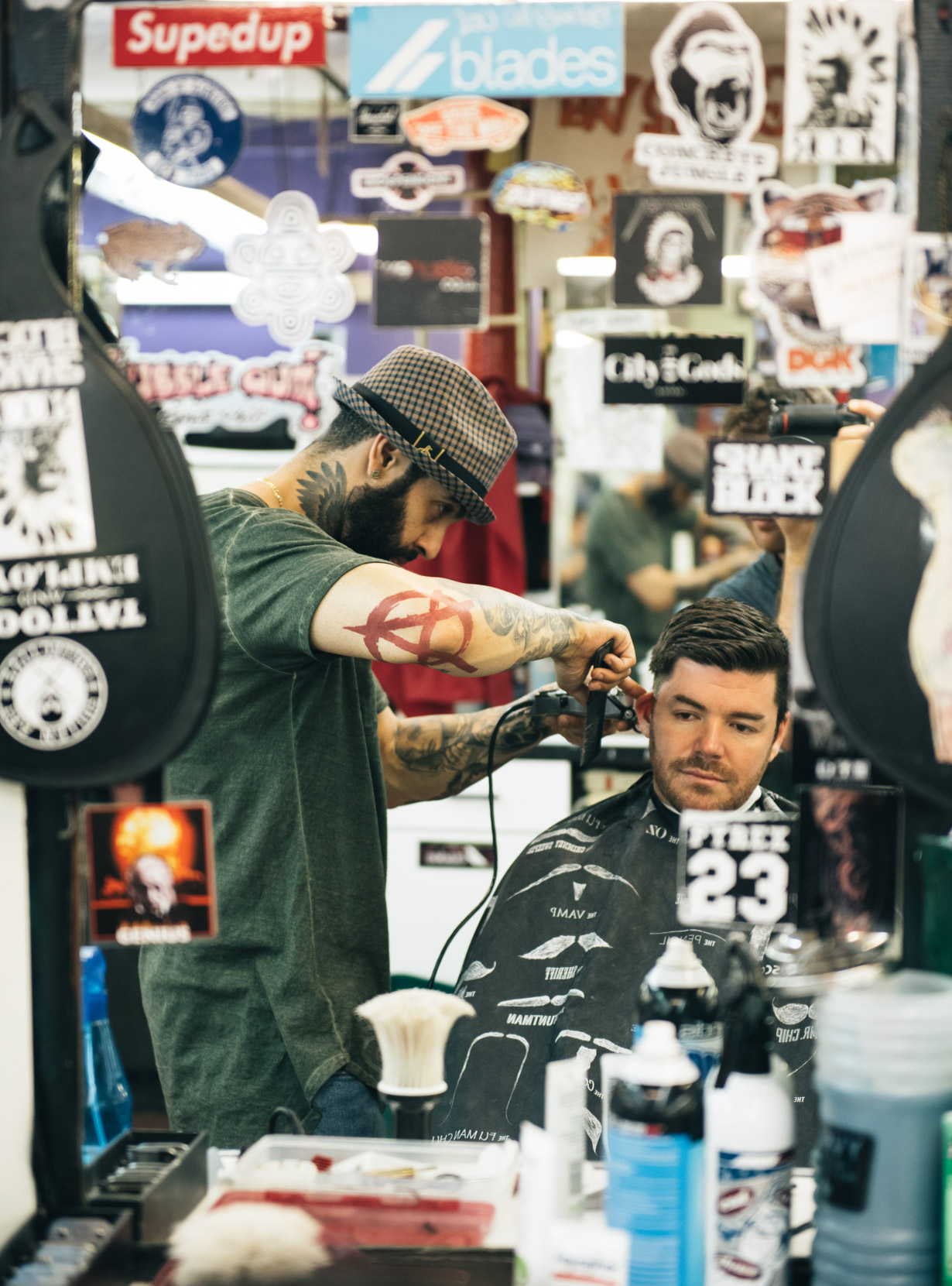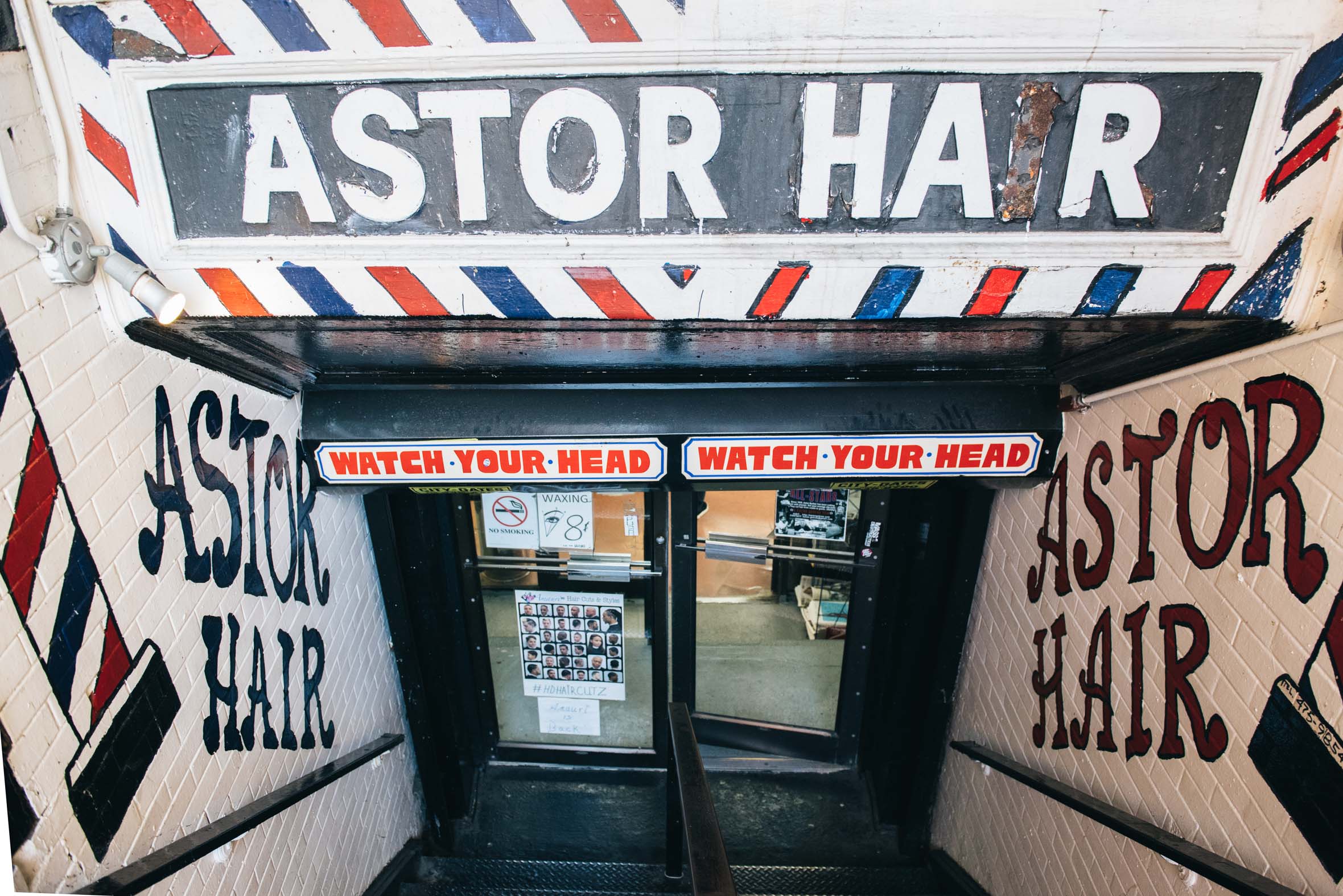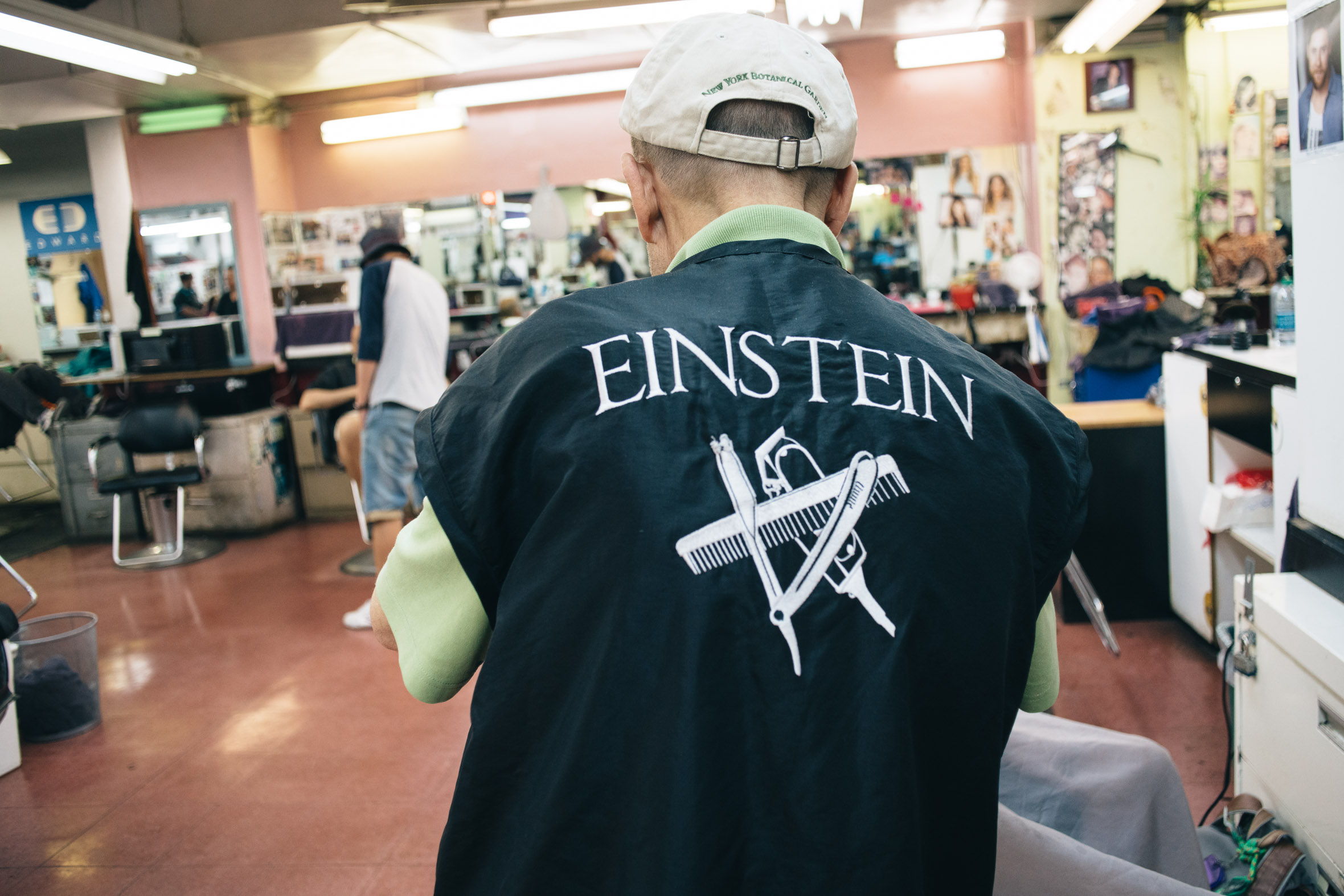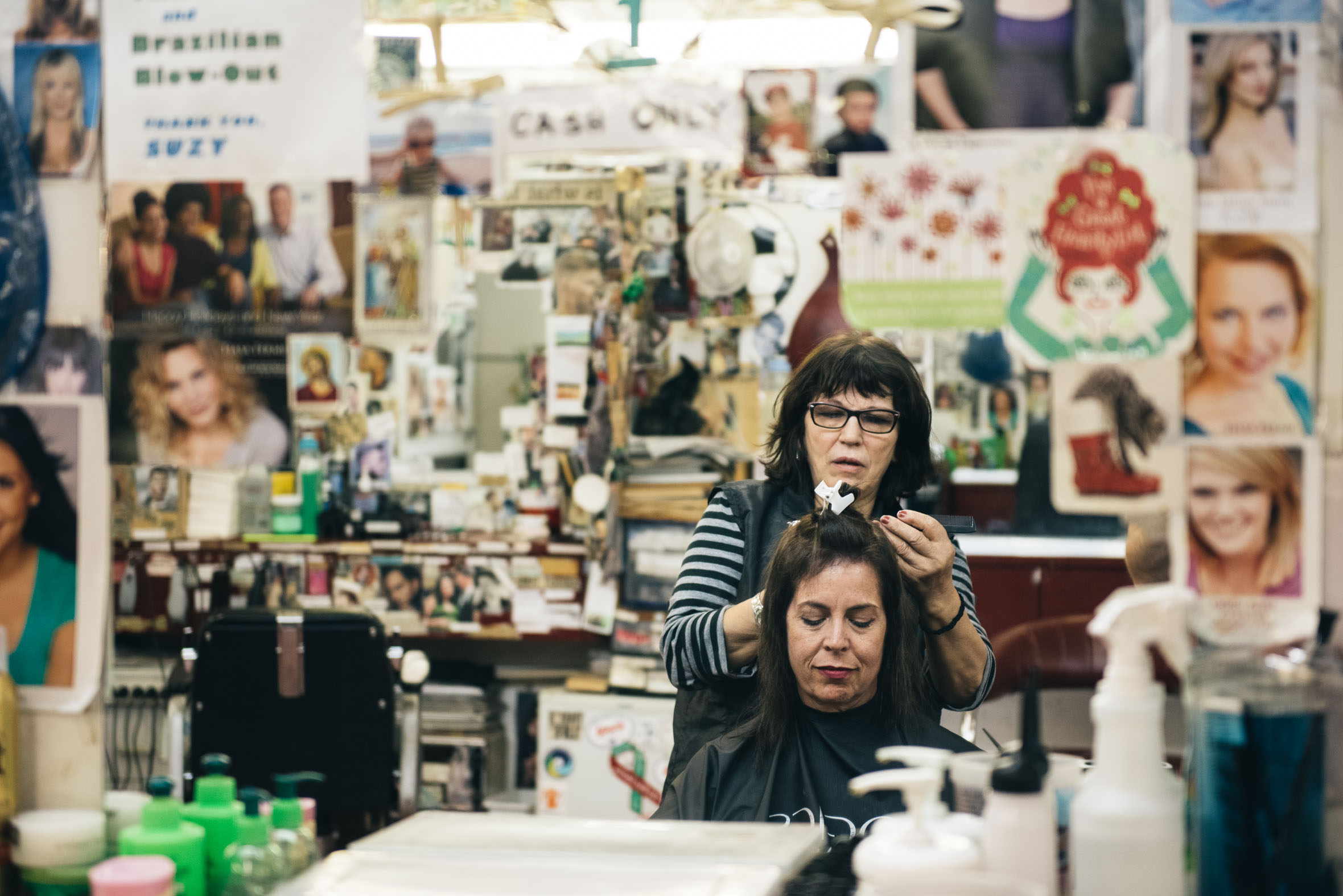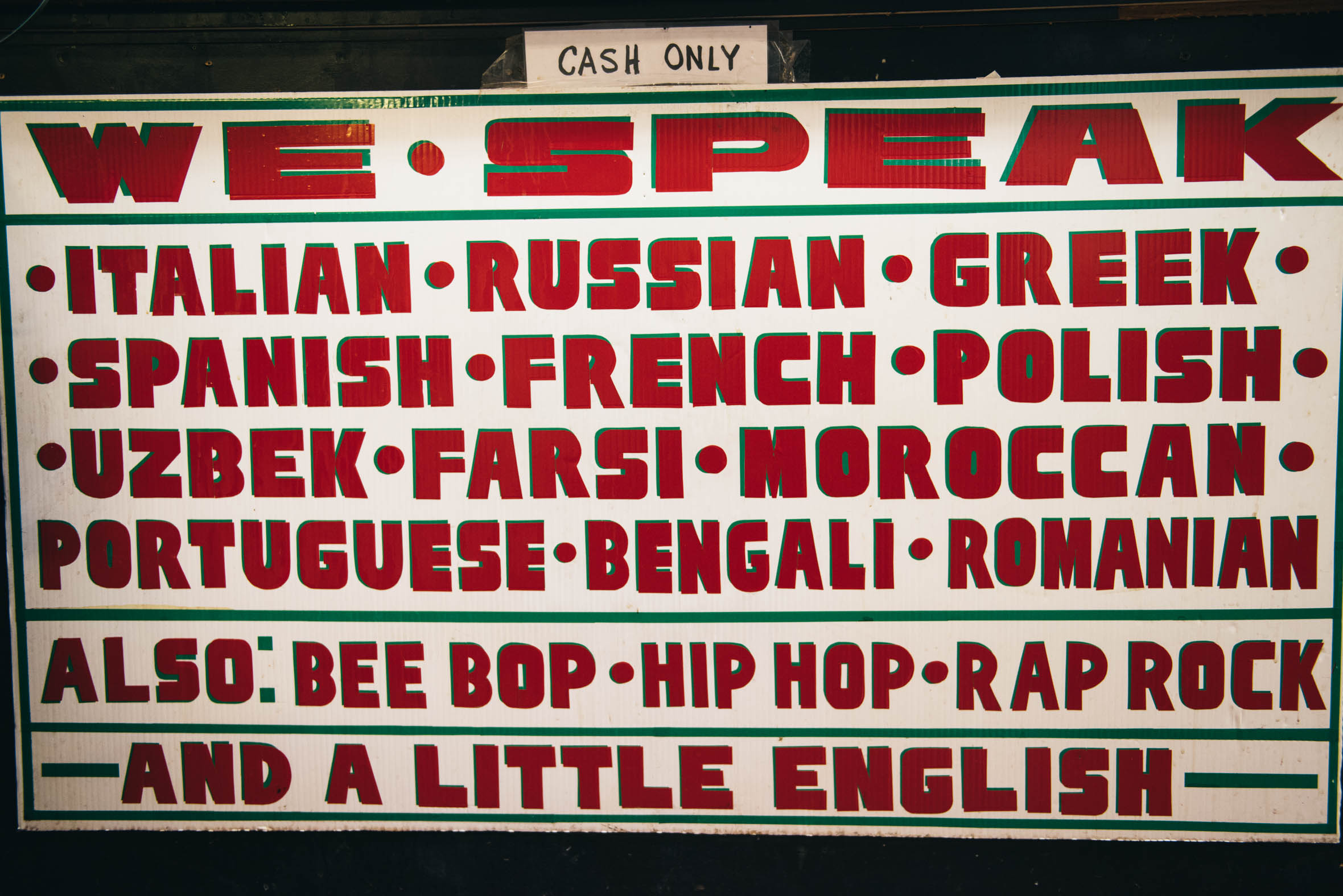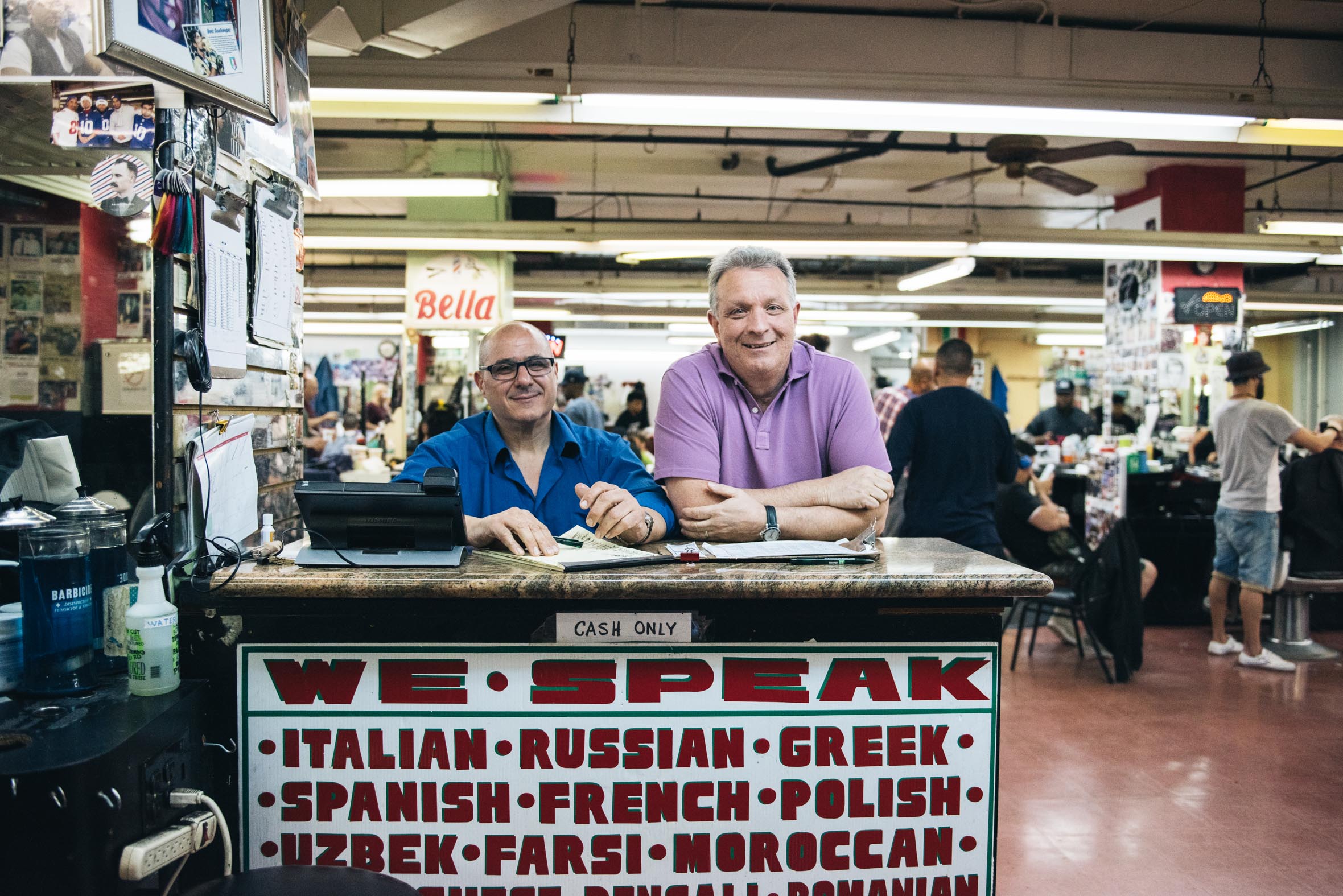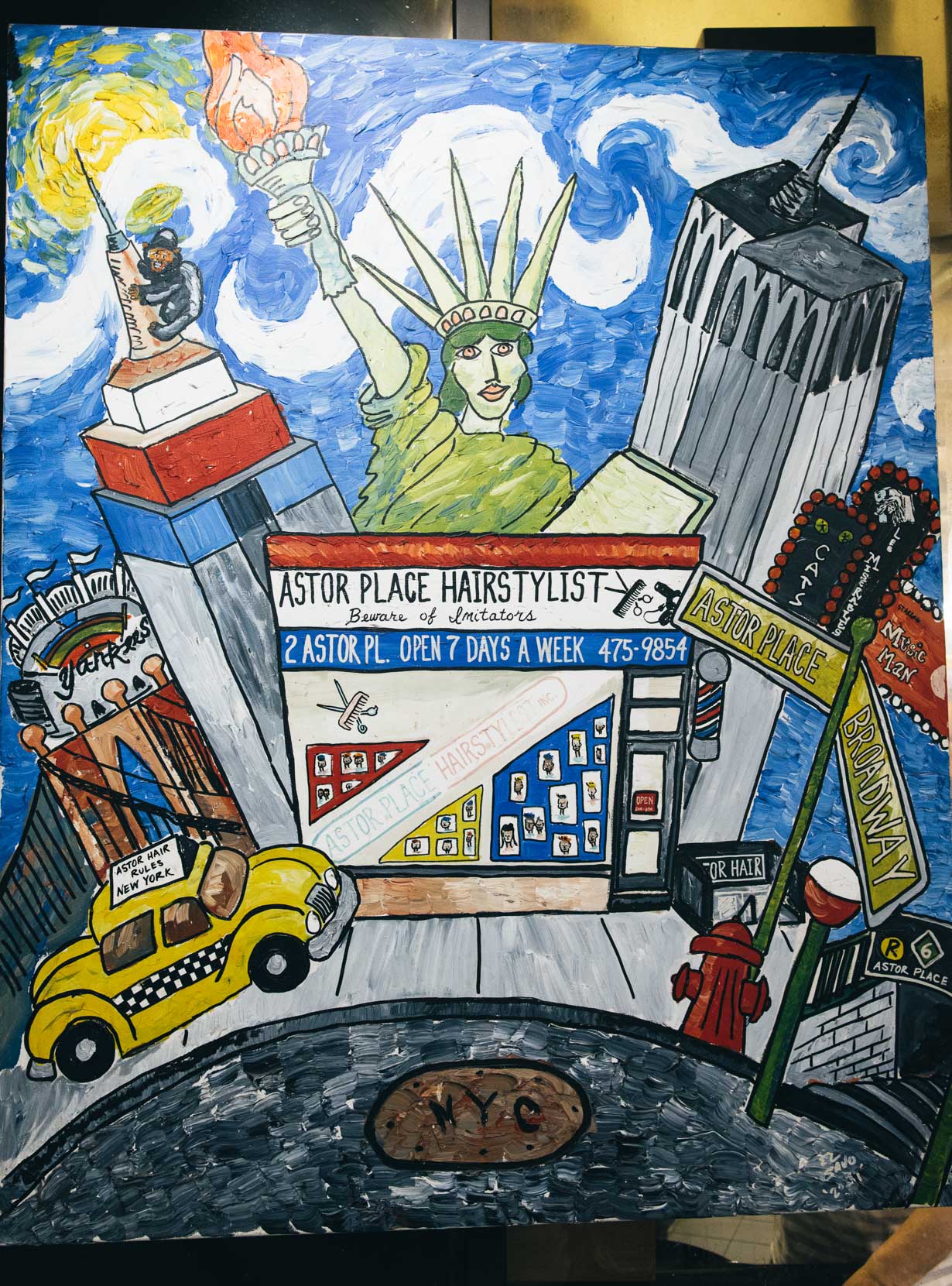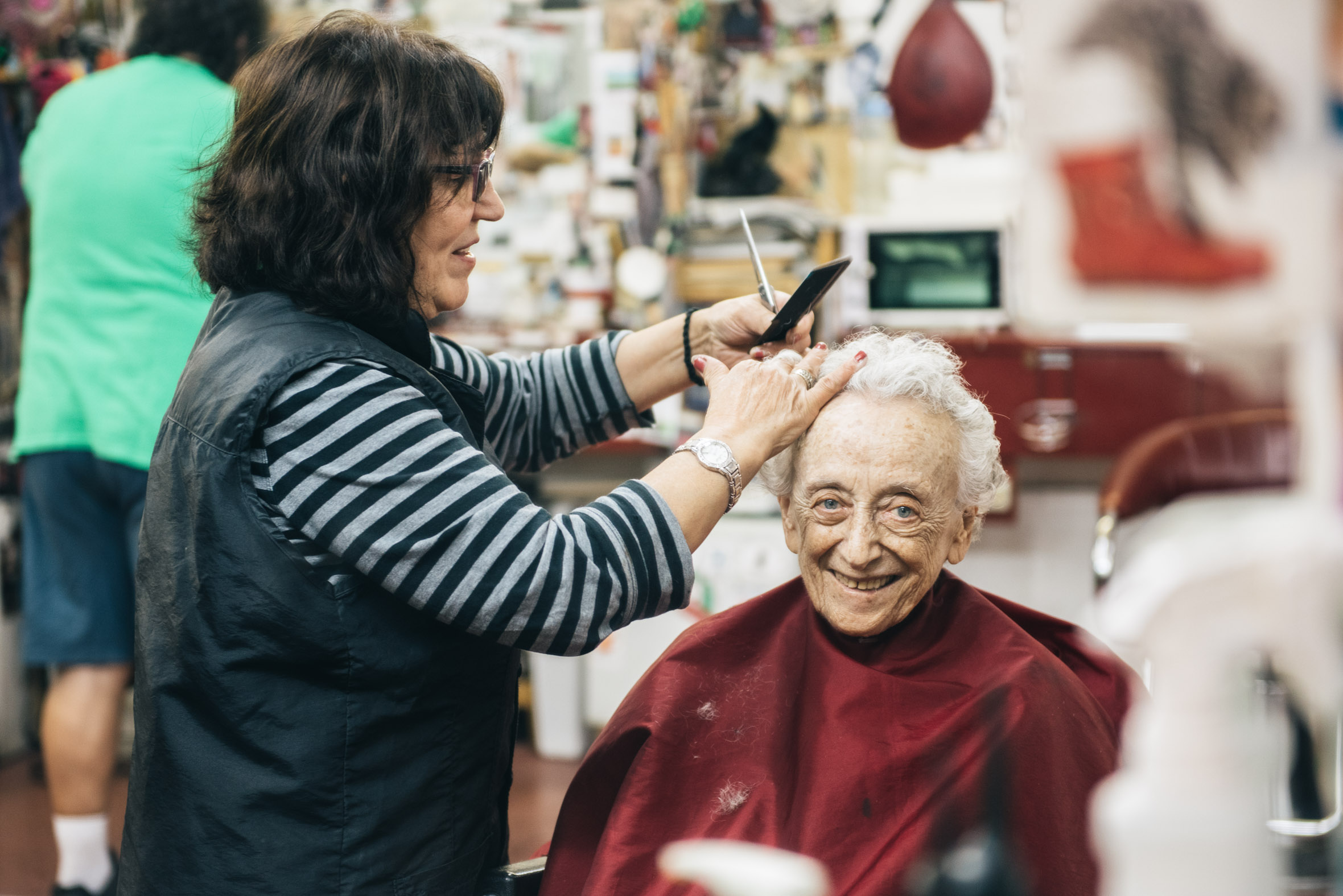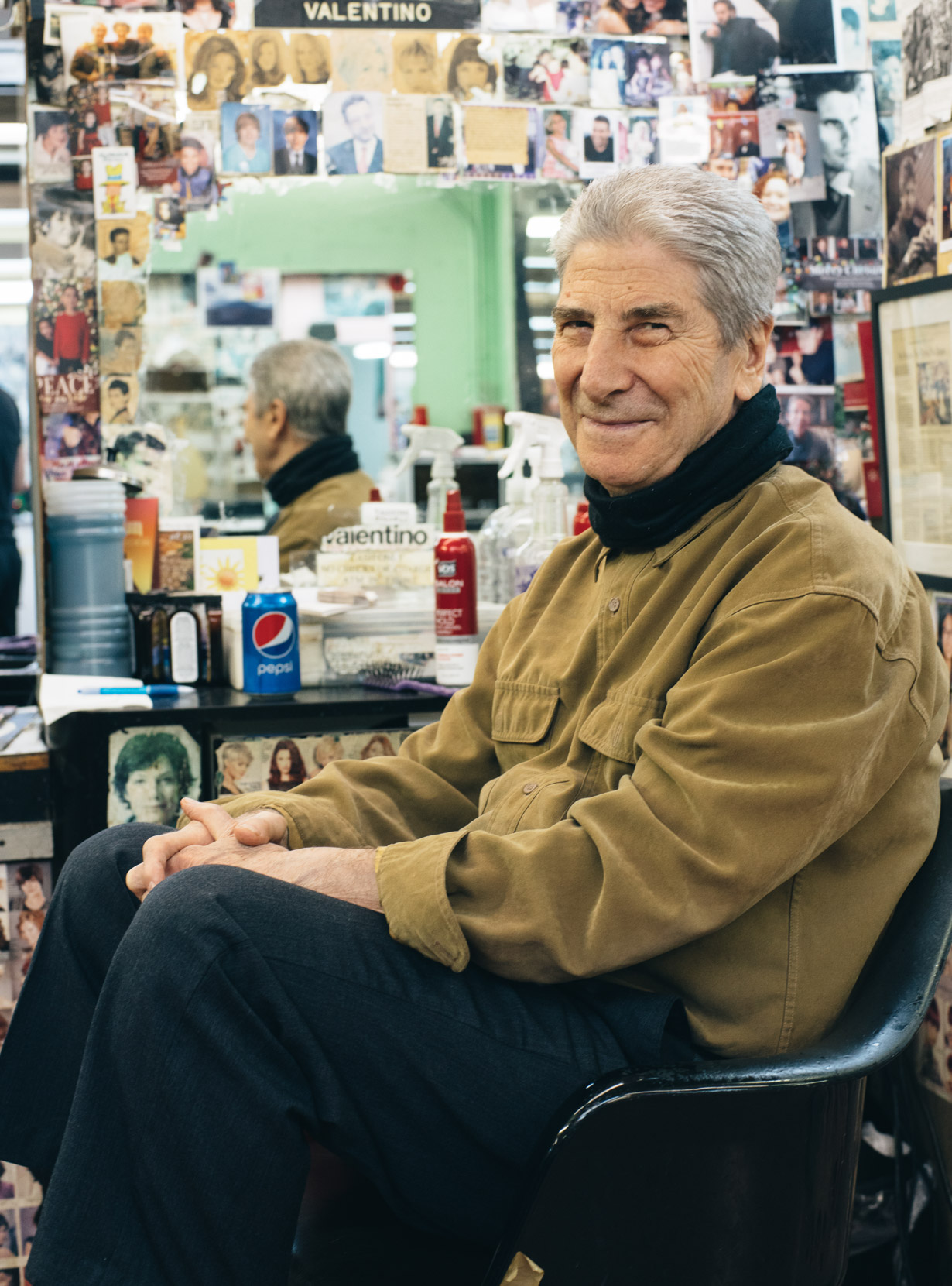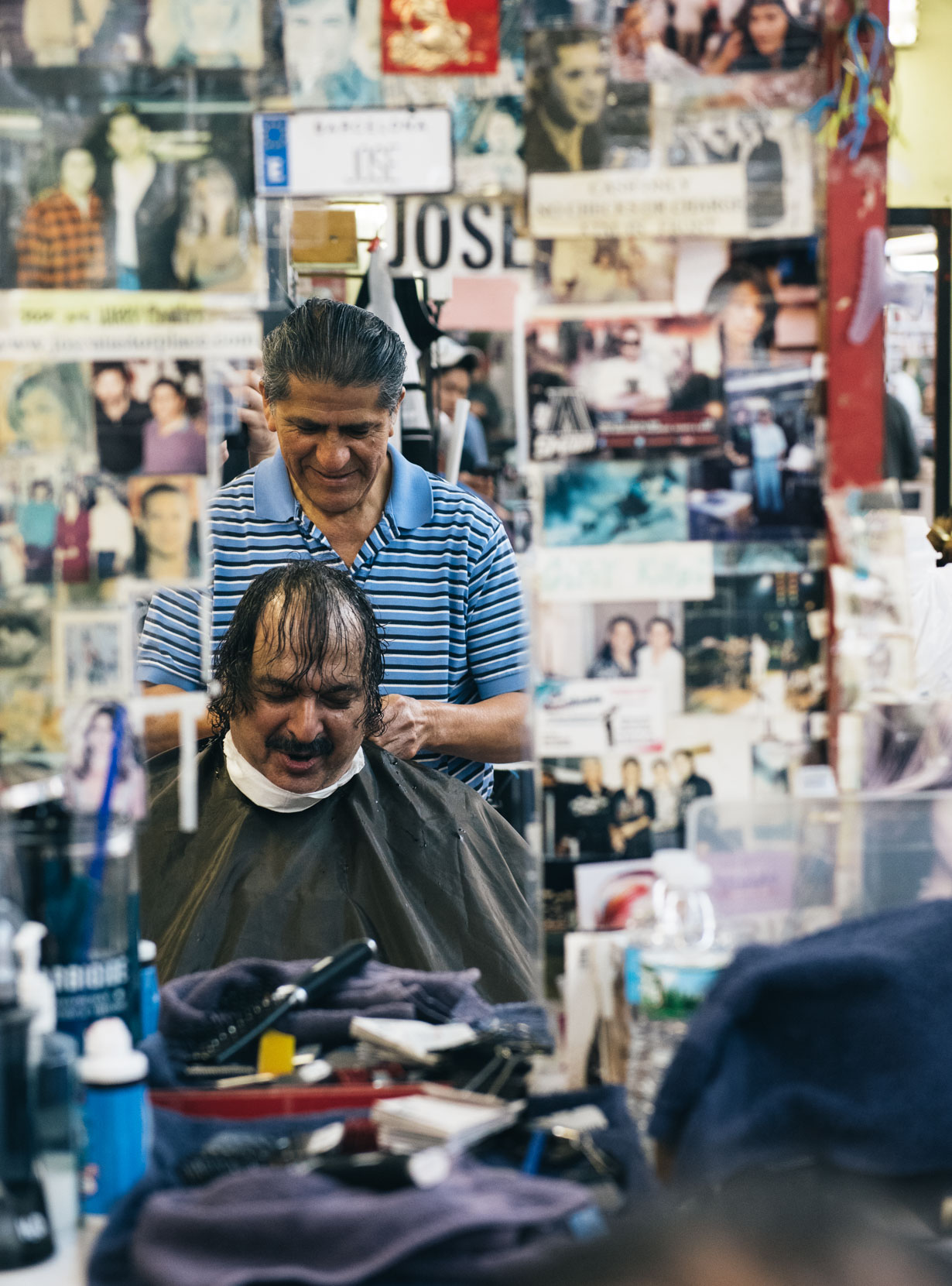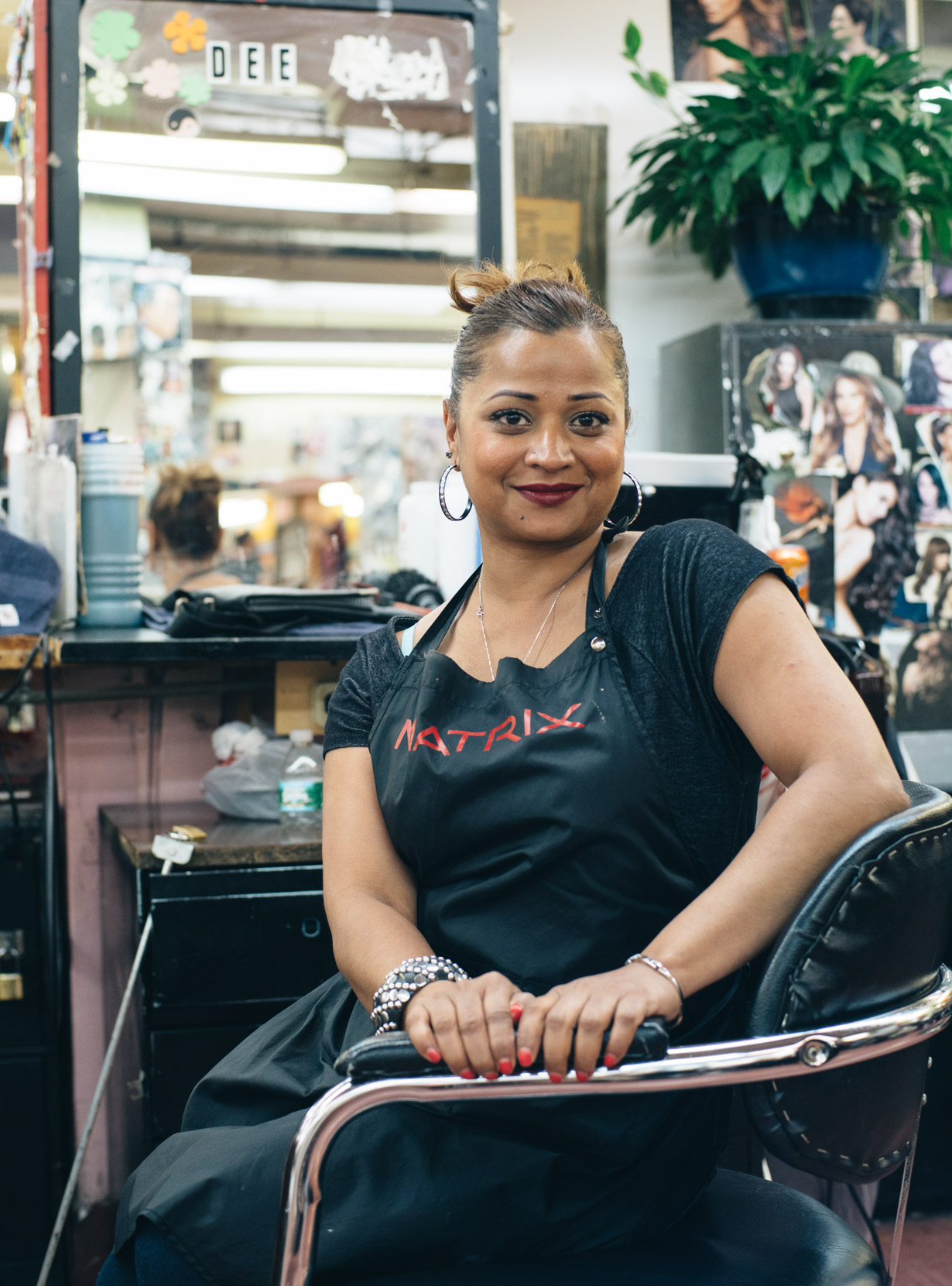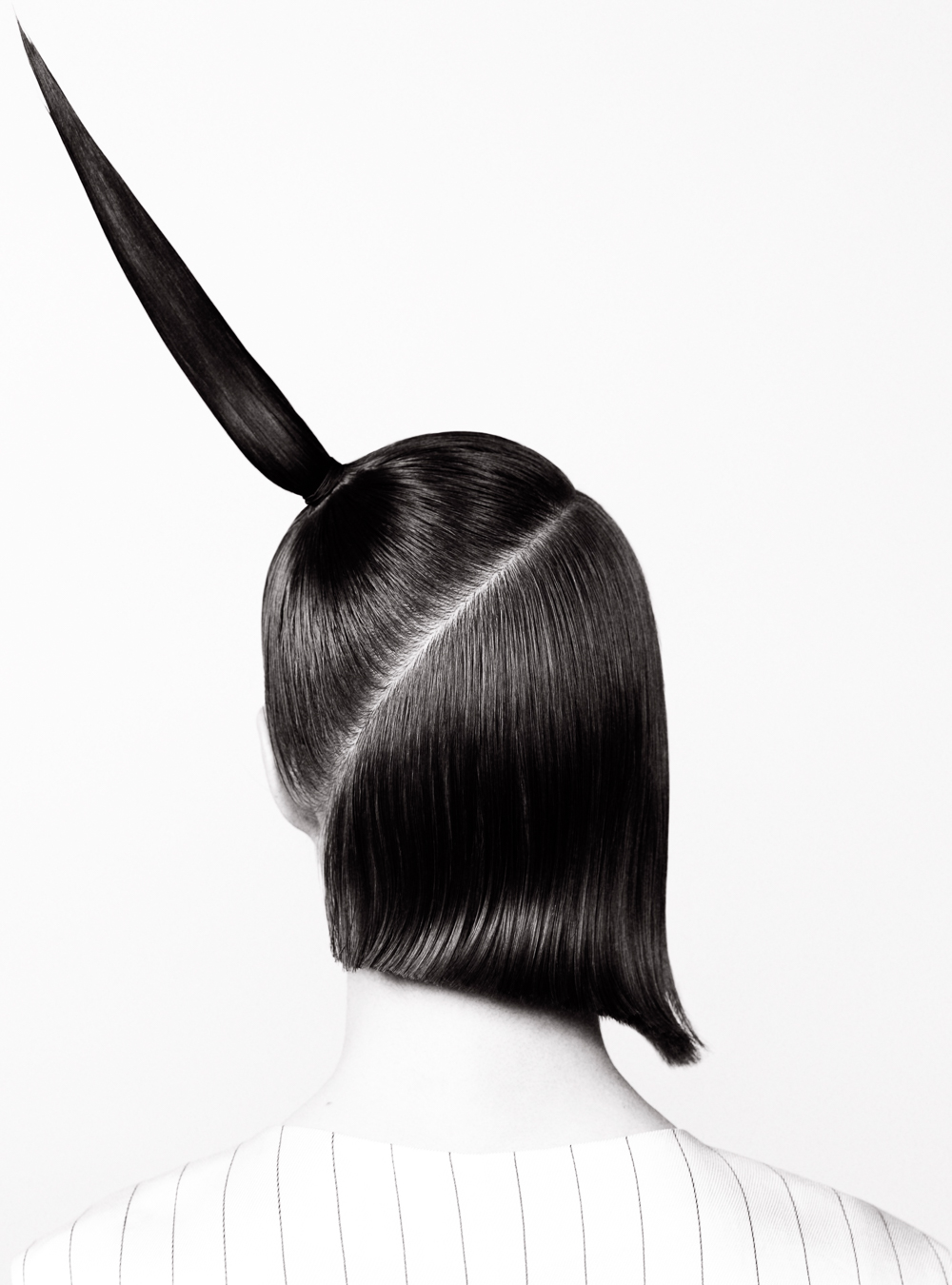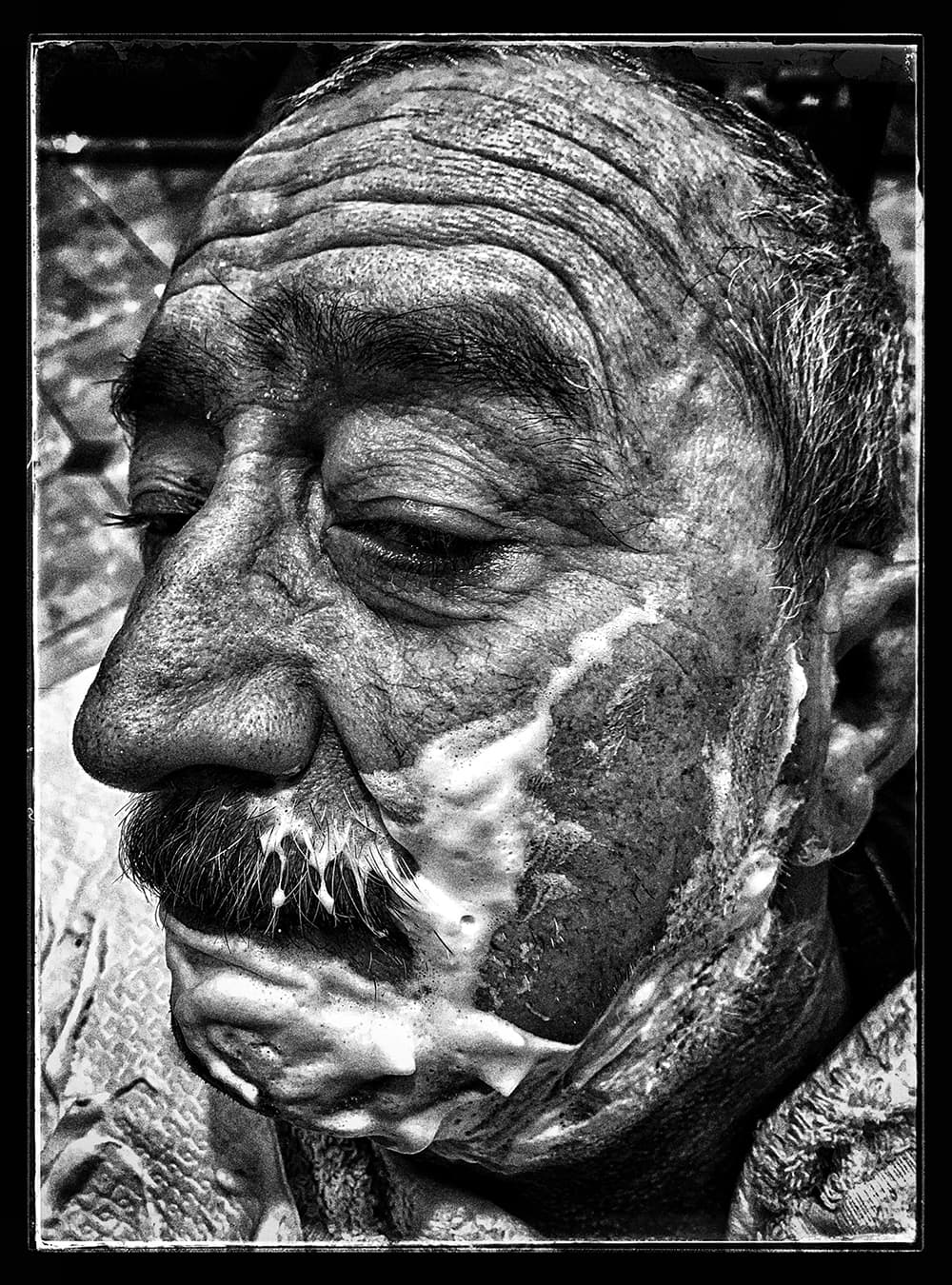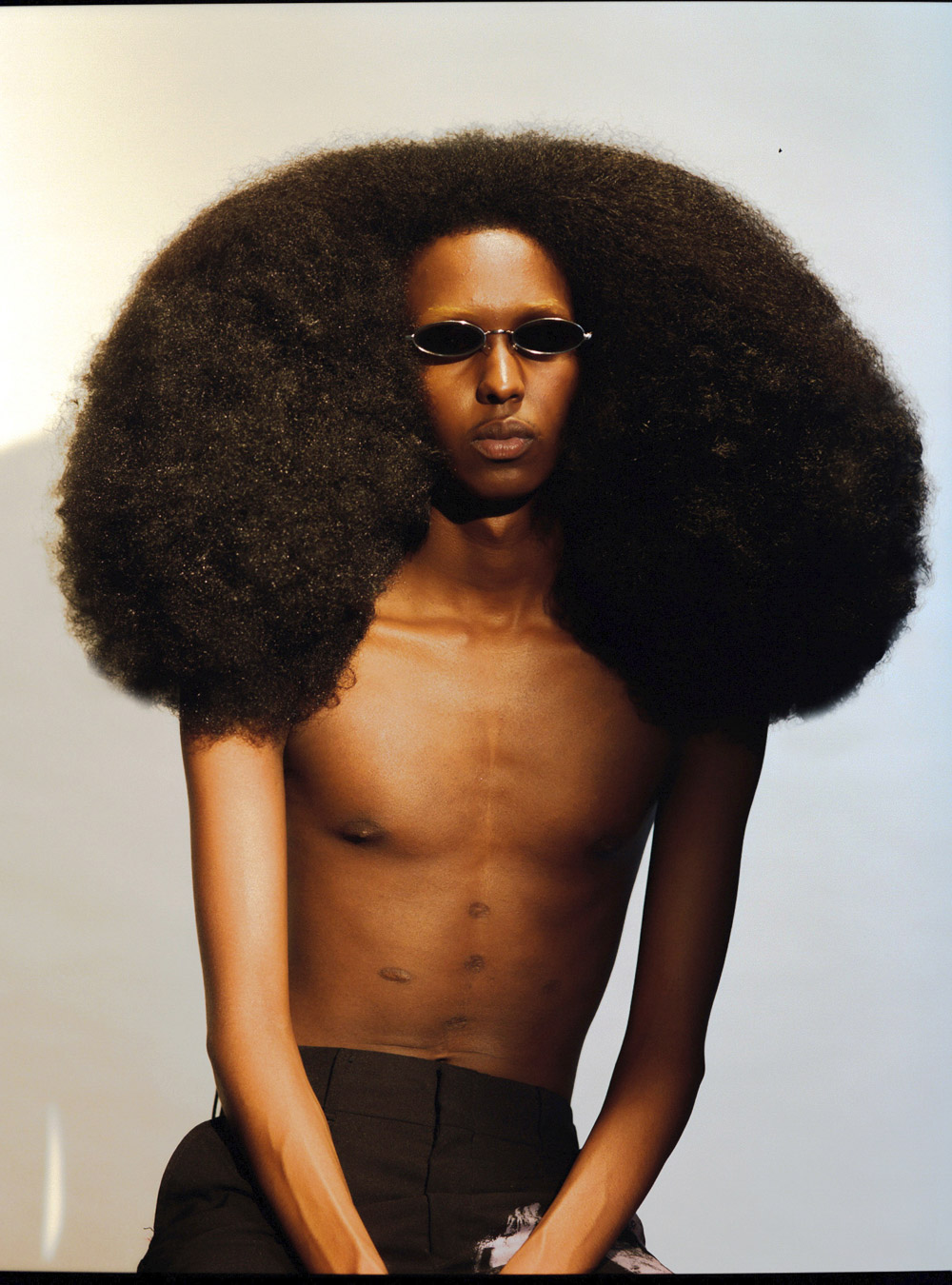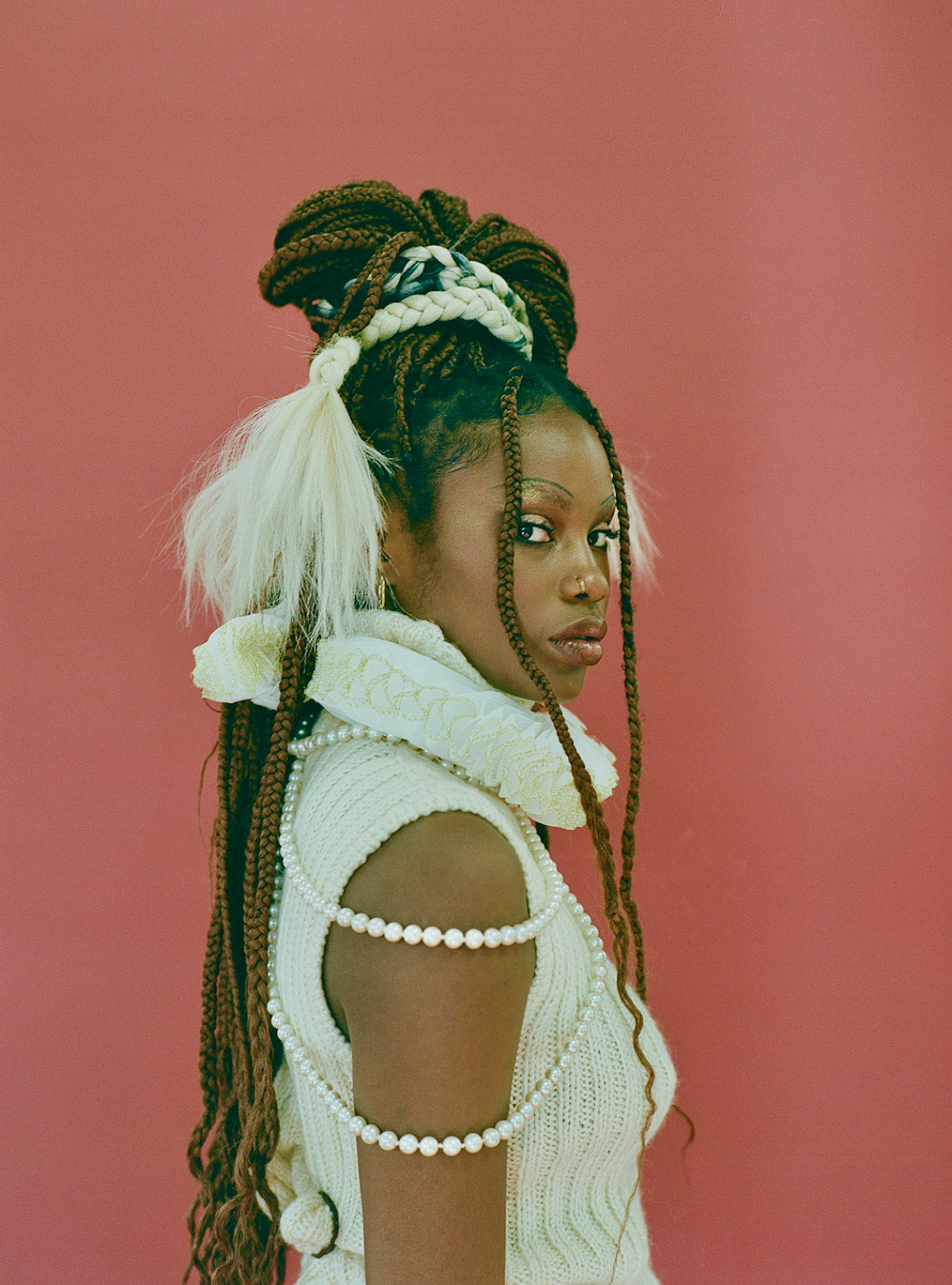PLACES: Beloved by its clientele including Robert De Niro and Bruce Willis, Astor Place perfectly encapsulates New York City’s diverse character within its four, ever expanding, walls
With over 75 barbers working under its roof, Astor Place is New York City’s biggest barbershop. It is also incredibly culturally diverse, employing barbers and hairstylists from all over the globe. “We’ve got Italians next to Colombians, next to Israelis next to Egyptians.. Muslim, Christian, Jewish… I mean, everyone has to get their hair cut!” owner John Vezza quips. Astor Place’s clientele is just as diverse as the barbers and hairstylists it employs, and many regular clients have visited for decades, drawn to its unpretentious atmosphere and correspondingly modest prices.
True to form, on the day of our visit, Astor Place is a lively hive of activity. The eclectic interior is peppered with DIY-decorations including photographs, cards and drawings created by Astor Place’s youngest clients. Polaroids of Astor Place’s many celebrity clients (Robert De Niro, Bruce Willis and Channing Tatum are all customers) line the walls.
We spoke to John Vezza, Astor Place’s third-generation owner, to shed some light on Astor Place’s enduring popularity. Vezza attributes it in part to the shop’s prime location in the heart of Manhattan’s East Village. However, he explains, it was a very different neighbourhood when Astor Place first opened its doors in the late 1940s. “It’s changed tremendously, back then it was all warehouses, very little retail, no nightlife to speak of… it was a struggle here for a while.”
Astor Place started out as a modest, 5-seat barbershop in 1947. Vezza jokes that, over the decades, the shop has been at the mercy of the ebbs and flows of New York’s ever-changing fashion trends, with each era presenting its own unique challenges. “In the 70s, long hair and rock ‘n’ roll were the enemy of the barber,” he chuckles, “but then in the 80s along came disco and punk, and all of a sudden getting your hair cut was ok again”. In the 1980s Astor Place’s popularity surged, a mixture of press interest, celebrity clientele and word-of-mouth cementing its reputation as a much-loved New York institution. “We had lines out the door, and my father, who was in his late 50s at the time, would be taking names at the door with a clipboard. We even had a guy with a tuxedo and a megaphone outside, and the crowds were getting bigger and bigger.” To keep up with the demand, Astor Place expanded into the large basement, where it remains today. “Anywhere there was an outlet we put a little shelf, mirror and a barber chair,” Vezza recalls, “it was so busy, at one point we had 118 haircutters working all day long”.
At its core, Astor Place remains a cultural melting-pot, a lively hub which perfectly encapsulates New York City’s diverse character within its four, ever expanding, walls.
Astor Place Hairstylists is at 2 Astor Place, Manhattan, NY 10003
Interview: Nathan Dytor + Antonio Celotto
Video: Antonio Celotto
Images: Panos Damaskinidis
Words: Emma de Clercq
- ANTHROPOLOGY OF HAIR
- ANTHROPOLOGY OF HAIR
- ANTHROPOLOGY OF HAIR
- ANTHROPOLOGY OF HAIR
- ANTHROPOLOGY OF HAIR
